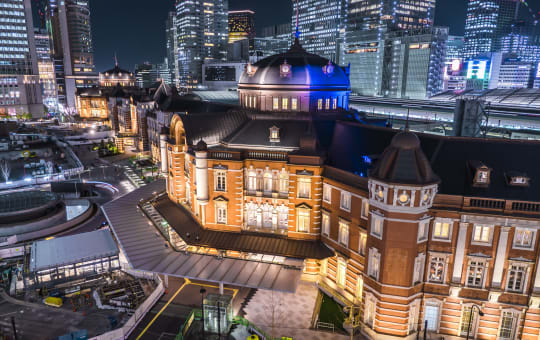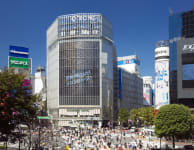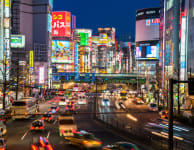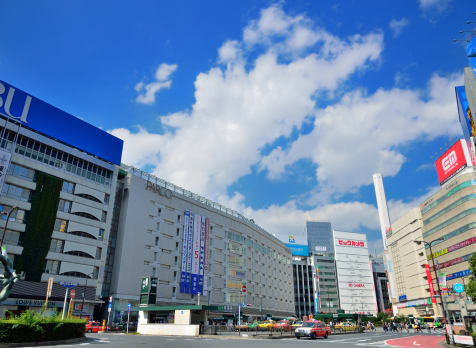

TOKYO Harajuku & Omotesando Adjacent suburbs and siblings of Tokyo's fashion world
Adjacent suburbs and siblings of Tokyo's fashion world
The districts of Harajuku and Omotesando might be next door to each other, but they're also worlds apart.
Both areas are hubs of Japanese and international fashion, packed with clothing stores, trendy cafes, design houses and fashionable locals strolling the maze of streets. However, their aesthetics couldn't be more different.
Don't Miss
- Harajuku's extravagant streetside sweets, such as cheesecake-filled crepes and unique themed cafes
- Espace Louis Vuitton, a gallery hidden on the top floor of the Louis Vuitton Building
- An unparalleled luxury shopping experience in Omotesando Hills
How to Get There
Harajuku and Omotesando are both easily accessible by train.
Take the JR Yamanote Line to Harajuku Station for Harajuku's Takeshita Street or the Metro Chiyoda Line to Meiji Jingumae for Omotesando. Both areas are connected by a main boulevard, so the best way to travel around is by foot.
Quick Facts
Takeshita Street in Harajuku is the center of Tokyo's street fashion scene
Omotesando is the approach to the Meiji Shrine, opened in 1920
The bridge by Harajuku Station is a popular spot for cosplayers and rockabilly dancers
Opposites Attract
While Harajuku is often at the forefront of the next big local trend, Omotesando focuses on the international and timeless. While Omotesando is all about luxury brands, the streets of Harajuku are overflowing with thrift store jackets and novel accessories.
Though their attitudes can contrast at times, these two Tokyo hotspots share a unique sense of cultural harmony and mutual appreciation that you won't find anywhere else. If Harajuku is the cool teenager, then Omotesando is the more mature and sophisticated older sibling.
Tokyo's street fashion mecca
For cheap, fun trends, make your way to Takeshita Street in Harajuku . Here you'll find upcoming trendsetting boutiques sharing walls with more iconic long-term staples like the nearby Dog, known to be frequented by fashion icons like Lady Gaga. Keep an eye out for deals as you dig through the shelves, and don't forget Daiso and Thank You Mart, Takeshita's two big discount stores.
Weave your way through the back streets that shoot off Takeshita to uncover a variety of tiny shops and at the end cross the main road to find Harajuku's sneaker district (look for the small alleyway to the right of Murasaki Sports). For the ultimate in "kawaii" fashion, be sure to stop by 6% Dokidoki, located near Meiji Jingumae station behind the Kawaii Monster Cafe.
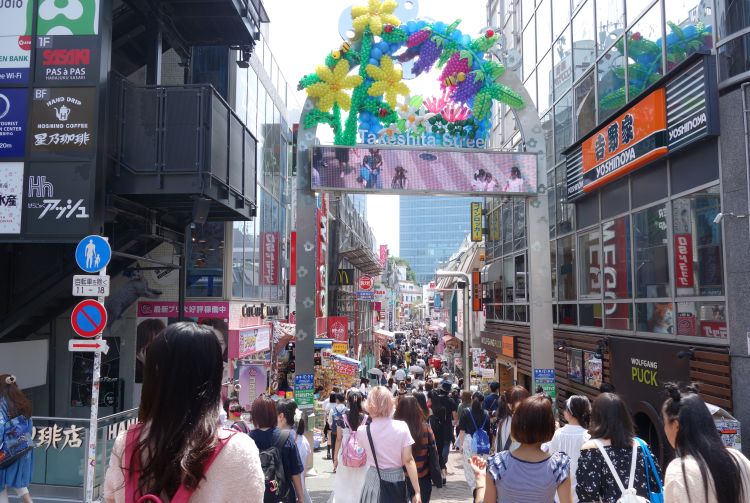
Designer labels and cat streets
Over the past few years, Omotesando has become Japan's home of modern high-end fashion, with many designer labels setting up stores along the lavish and spacious boulevards that line the area. The second biggest upscale shopping neighborhood after Ginza, Omotesando differs from Ginza by focusing on more contemporary names like Maison Margiela, H&M, and MVRDV over classics like Dior and Prada (although both have locations in the area). Head to the iconic Omotesando Hills mall for seven floors of high-end fashion.
Physically and aesthetically between Harajuku and Omotesando lies Cat Street. A little more upmarket than Takeshita Street's offerings and less expensive than Omotesando, this popular local shopping destination is filled with some of the best variety of stores and cafes in Tokyo.

Where the future and past collide
In addition to high-end upscale shopping and cutting-edge trends, the corners of these two neighborhoods are filled with a rich history. Harajuku is home to Meiji-jingu Shrine , one of the city's most famous and well-trodden spiritual sites, and one of the area's largest green spaces. Originally completed in 1920, the shrine was destroyed during the Second World War, but was rebuilt not long after.
Omotesando is the front approach leading to Meiji-jingu , with the Japanese "omote" meaning "front" and "sando" meaning "approach."



Galleries galore
If there's one thing that connects the Omotesando and Harajuku areas, it's a love of art. Both neighborhoods are filled with mainstream and independent galleries displaying works from both local and international artists.
Be sure to visit Design Festa Gallery in Harajuku and Espace Louis Vuitton in Omotesando to get a broad overview of what the area has to offer, or hit the backstreets for the cozy Nezu Museum .




















































